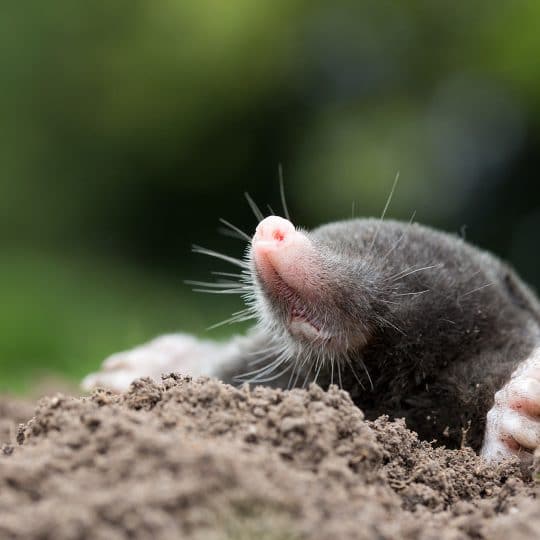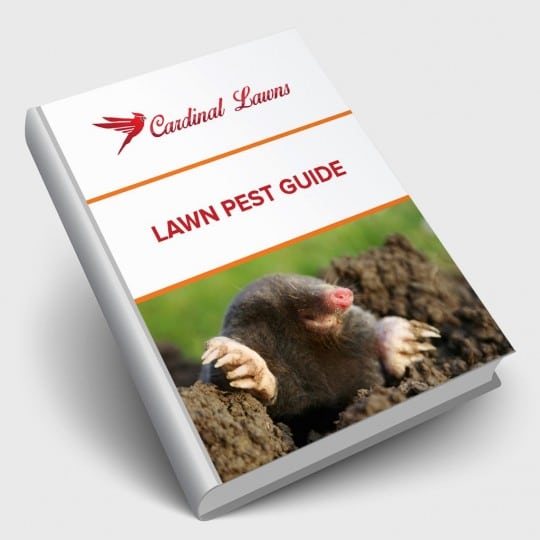Mole Control
How to Protect Your Lawn
Posted
November 9, 2017

When your yard becomes a construction site for mole tunnels, it’s time to take action. Mole control starts with making your yard a less desirable place for moles to reside. If that doesn’t work, you must take more direct action.
Identifying Moles
You’ll be able to tell if a mole has taken up residence in your yard if you start to see signs of their tunnels:
- Mounds of soil that, when cleared away, lead to an opening to a short passage a few inches into the ground.
- Raised soil or grass-less streaks of brown dirt form a straight trail across your lawn.
- Two or more mounds connect.
- Mounds appear along the length of fences, paths, or wooded perimeter of your yard or field.
You may also spot a mole or two in the flesh. They have black or gray fur; a slender, pointed snout; needle-like teeth; small ears and eyes concealed by fur; flattened feet; claws; and can grow up to about 12 inches long.
Methods of Mole Control
Once you’ve confirmed there are moles in your yard, there are several ways to control the population.
- Baiting. There are many products available at your local lawn and garden store that are made for baiting moles. Many baits mimic the moles natural food source: earthworms. However, store-bought mole bait contains a toxic component meant to kill a mole quickly.
- Traps. Trapping a mole takes more time and patience. You’re more likely to trap a mole in the spring or fall after it rains when moles are more active. Catching moles in the spring could also mean catching a pregnant one—limiting future issues. Place traps in active mole tunnels. To tell if it’s active, fill in any holes in the opening to the mounds. If the mound is reopening in 24 hours, there’s been activity. Certain traps are made for capture and release methods, while others are designed to kill.
- Gas. The use of smoke bombs aren’t as effective if not used in active tunnels. Repeated application may be needed as well, and it’s best if a professional handles the toxic materials.
- Repellants. Granulated or liquid repellants can be applied professionally during more active seasons. Many formulas contain citronella, garlic, and castor oil to repel moles.
- Insecticides. Moles feed on insects, grubs, and worms. If you use insecticides to rid your lawn of their food source, moles are less likely to stick around. However, this may backfire if there are very determined to find food and tunnel more aggressively throughout your yard.
Mole Activity
While you may only see mole tunnels prominently in the spring or fall, moles may be busy looking for food in deep burrows after the surfaces freezes. Moles work day and night constructing their tunnels, and can be seen more during damp days since that’s when they’re more likely to find the worms they love in cool, moist soil.
While moles don’t feed on roots and bulbs of plants—they may even benefit these plants by eating harmful grubs—they can rip up a garden by tunneling through it. Controlling moles before they do extensive damage to your lawn is best left to a professional. Once you spot signs of their tunnels, call Cardinal Lawns to see what your best mole control options are.

Download Your FREE Lawn Pest Guide
Pests become most prevalent during the heat and humidity of summer. Take some time to learn about the signs of infestations before any damage can be caused to your landscape. This handy guide will teach you how to spot common lawn pests and how to keep them from causing harm to you and your property.